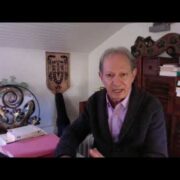This SCIENCE program is training in problem-solving by M. Mahoney that demands active participation. This process has seven stages. Actually, the goal is for the person to be in control at all times, employing initiatives to explore reality.
The goal of problem-solving training is to teach the person to observe, analyze and evaluate possible options in the face of a dilemma. At the same time, the purpose is to eliminate the anxiety and stress that usually characterize the management of important issues.
The constructivism method
M. Mahoney’s SCIENCE program, ascribed to the constructivism current in psychology, is one of the methods that help people become skilled at analyzing. It also helps them identify and solve problems by changing their behavior or thoughts.
Constructivism begins with authors such as Piaget, with his genetic epistemology, whose goal was searching for the origin of the awareness of the human being. Its basis is to consider the person as an active agent. This means that they aren’t passive or “patient” in the acquisition of skills and knowledge and as a perpetrator of change. For instance, the human being isn’t simply a sum of random conditions over which they have no power. People reinvent themselves and do this by relating dynamically to their environment.
Constructivism claims that all knowledge originates from previous knowledge. Piaget affirmed that the new is built on something old and that it tends to transcend it. What’s more, it completes and complements it. From the time you’re a child, you gradually develop schemas. Then, you can derive ways of thinking, feeling, and, therefore, acting.
Since the schemas are built during childhood, they’re self-perpetuating and bias the interpretations. It’s similar to the irrational thoughts of the cognitive-behavioral models. Therefore, the person learns to act as one or another schema biases that action. Examples of schema could be abandonment, failure, or grandiosity.
The personal science of Mahoney
Mahoney designs his SCIENCE problem-solving program on constructivism. He argues that each individual has a personal way of constructing what’s coherently related to their “self”. Therefore, this way of constructing seems to be maintained over time, thanks to structures formed in the past and which are still active.
This is why Mahoney calls this program SCIENCE. He seeks to make the human being a personal scientist of their own conflicting behavior. At least at that moment, there’s involvement, so that at the end of the process you can make the changes to resolve the conflict.
Faithful to its constructivist roots, the SCIENCE program requires active participation during its training and application. During this time, it leaves emotional management, self-control, and self-regulation in the hands of the individual. It’s their responsibility to engage and govern the direction of their reactions.
Mahoney argues that the origin of these problems is related to a discrepancy between “what is” and what “should be”. Therefore, he locates the problem in the situation, in the thought, or in the behavior itself.
SCIENCE Protocol: Acronyms and order of application
Mahoney presents his program by relating each acronym of the word “science” to the guidelines to be followed for optimal problem-solving. These acronyms correspond to:
- Specify (S): Locate in a general way what the problem experts need to solve is. This can be found as a result of strong emotional reactions, anxious thoughts, and behavioral consequences. With this, they define the stressors.
- Collect (C): Before looking for solutions, or even making an ill-advised and counterproductive decision, they seek information. It’s common not to know what’s happening or not to understand why reality conforms to expectations. It’s also usual to make a mistake when defining the problem they need to solve. For this reason, they place special emphasis on personal science. Also, they emphasize getting to know oneself and establishing what isn’t going well. This could be achieved through positive psychology exercises that focus on the design of schemes or action plans, paying special attention to the distorting thoughts that may arise.
- Identify (I): Specialists use techniques such as the functional analysis of cognitive-behavioral models. This way, it’s possible to identify the causes of the problem. This makes it possible to study the person’s dispositional factors, environmental factors, protective factors, risk factors, etc.
Putting the Mahoney solution into practice
- Examine (E): With all the information, experts try to reduce the gap between what “should be” and what “is”. These use these solutions not just to adapt to the nature of the problem. In addition, they’re meant to adapt to the person’s way of being and identity. This is why the preliminary work on the schemas and the search for information are so important. Then, they seek out different solutions that they can put into practice. Mistakes aren’t penalized since we’re talking about personal science and every action is an opportunity for growth.
- Narrow (N): Similarly, in the search for personal science, Mahoney proposes to put the solution into practice as a trial or experiment. If this doesn’t work, experts look for another one. They want the person to experience.
- Compare (C): Once they employ the solution, they want people to look at their baseline, the point at which they started, which would be the time when they had the problem, and compare it to the present time, to decide if that solution is valid. They don’t have to have solved the problem, but they can improve or change it.
- Extend (E): In this last step, Mahoney proposes to review that solution, modify it, or replace it if the comparison isn’t positive. If the solution had effectively solved the problem, it would be ideal to generalize it for later application to similar problems.

This way, people will have a range of problem-solving that they adapt to their schemas, their learning history, and trial and error within their own experience. Therefore, generalized and standardized remedies won’t influence them.
Modeling, reinforcement of processes according to approaches or gradual completion of tasks, or acquisition of self-assessment skills, would be complementary strategies that would increase problem-solving ability.
The post What’s the M. Mahoney SCIENCE Program? appeared first on Exploring your mind.


















Comments